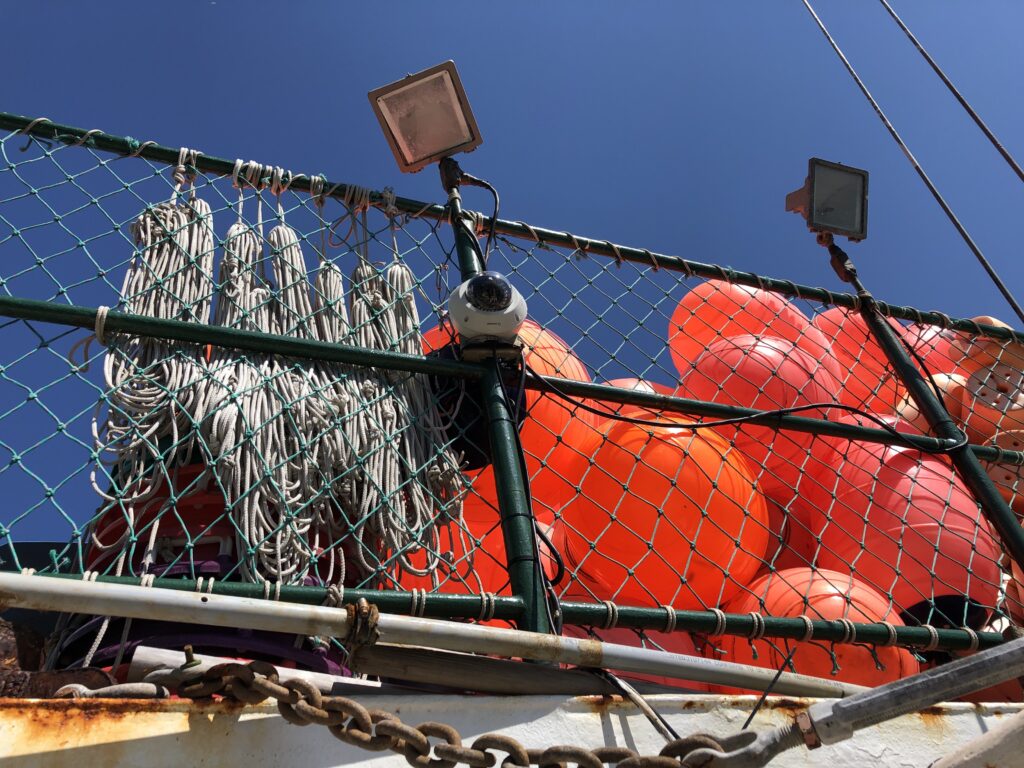Whatever the fishery monitoring method, a common question is how much monitoring is enough to get the information needed to manage a fishery? That question usually comes with another – how much will it cost?

With three colleagues, I set about answering such questions as part of a project funded by Pew’s international fisheries project. We developed a prototype simulation tool to evaluate the necessary level of EM review to meet one or more fishery monitoring objectives, within budgetary limits. We also investigated approaches to maximising the efficiency of EM review when there are multiple objectives to be considered.
The simulation tool, which we called EMoptim, is now available for anyone else facing question of ‘how much is enough’, in their fishery. The tool is coded in R, and freely, publicly available on GitHub here. Our project report includes a worked example of EMoptim and we anticipate that will be useful to people navigating the model code.
So what does EMoptim do?
Our approach with EMoptim involves setting monitoring objectives to be met by EM (single or multiple objectives can be set), and identifying accuracy/confidence requirements (e.g. coefficient of variation, which can differ between objectives), cost limits, or other constraints. EMoptim outputs the amount of EM review necessary to meet the specified monitoring objectives for the focal fishery.
Existing fishery knowledge is used to identify strata within which sampling effort is allocated for review. Strata are defined by the user, and can be based on statistical reporting areas, gear type, fisheries sector, time periods, species characteristics (e.g. distributions of age/size cohorts) or any other factor. Information sources such as risk assessments and expert judgment can also be used to estimate the distribution of taxa of interest and interaction rates when fishery-dependent information is inadequate.
Simulation modelling is then used to identify the required review rate within the limits set, assuming that 100% of fishing activity is captured on all vessels in the focal fishery.
The worked example in our project report steps through the components, inputs and outputs of EMoptim.
What will this model do for me that others won’t?

Optimizing review rates to cover more than one monitoring objective is a key point of difference with EMoptim. For example, perhaps catch estimates of different tuna, shark, and turtle species are required, all with 30% CV. In addition, estimates of catch of a particular threatened seabird species is required, with 10% CV. EMoptim will estimate species-specific EM review rates and also provide an optimised review rate that considers all of these objectives, as required to meet the CVs set by the user. It will also provide a cost estimate for the monitoring regime the user defines, based on review cost information.
Secondly, users can investigate the effects of different strata on monitoring rates, any way they want to. Stratification can be a powerful way to increase the efficiency of monitoring effort, especially for commonly caught species. For example, maybe there are flag states or gear types among vessels within a fleet, or a seasonal component, or different geographic scales that a fishery can be boxed into. These factors can all affect required monitoring levels, requiring less or more EM review to achieve monitoring objectives.
Of course, budget constraints are the reality of most monitoring programmes. In such cases, EMoptim can estimate what different review regimes can deliver within budgetary limits.
What’s next?
We hope that EMoptim will promote more objective and transparent decision-making about EM review levels. It will be clearer what monitoring objectives can be met by real-world programmes at certain levels of review. It will also be clear what is not possible when budgetary and other constraints on review apply. EM programme and fishery managers can then progress, cognisant of the strengths and limitations of the dataset that the chosen level of EM review provides.
The project team greatly appreciated Pew’s support to undertake this work. In addition, almost 30 contributors generously shared their insights and expertise with us during the project. Their contributions significantly enriched the outputs as well as demonstrating the depth of knowledge and enthusiasm for EM among our practitioner community.
Johanna Pierre is Director and Principal Consultant at Johanna Pierre Environmental Consulting.


